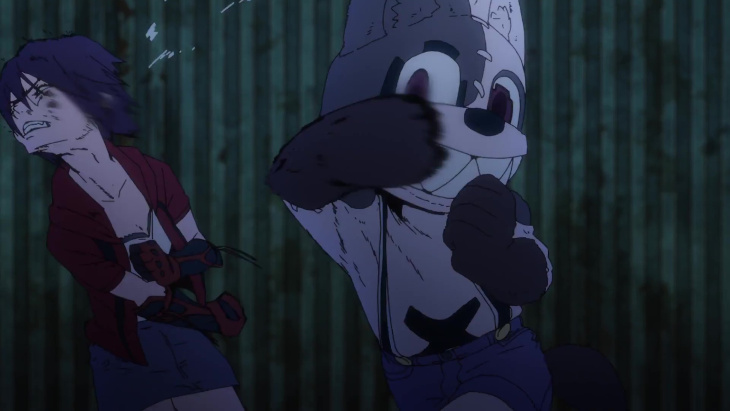
“‘We two are one,’ right? I’ll always protect you. Help me, till the end.”
Back when the Spring Anime season began, I decided not to do a first impressions review of Gleipnir on the simple reasoning that I didn’t know how to judge its first episode. Now that we’ve reached the end of the season, I think it’s fair to say that Gleipnir takes the seasonal award for, “Show With the Most Surprisingly Consistent Quality.” To put it bluntly, I didn’t believe Gleipnir would be this good, as it immediately started eliciting comparisons to other more mediocre anime. However, it proved to be one of the better titles of this past season, and I certainly wouldn’t mind seeing a second season in the future. Gleipnir is a show that carefully straddles the line, narrowly avoiding coming across as edgy, exploitative, or just generally excessive, but this results in an uncomfortable show that knows how to use its unnerving qualities as an asset even if it doesn’t offer a satisfying conclusion.
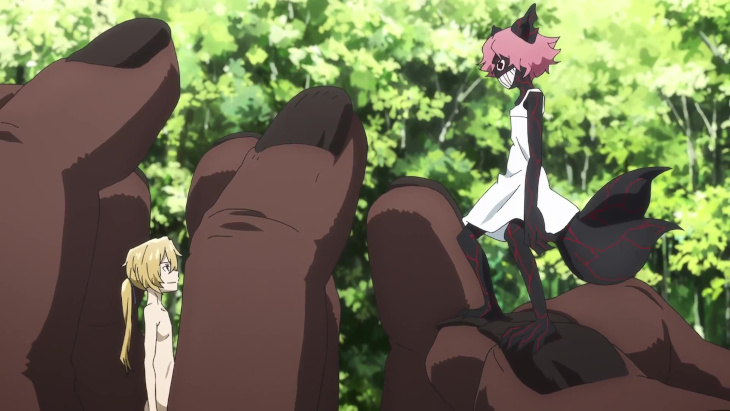
Gleipnir follows Shuichi Kagaya, a seemingly average high school student who has a bizarre ability. He can transform into a large mascot costume with superhuman abilities. When he ends up using his alternate form to save a classmate, Clair Aoki, she blackmails him for information and assistance finding her sister. Together, they discover that people have been using strange coins to bargain with an alien for powers, and, while Shuichi can’t remember the details, his powers were bestowed by the alien as well. The coins are actually containers that house the alien’s friends, and, if someone is able to acquire 100 of them, he will bestow upon them the power to do whatever they want. As premises go, that’s a pretty zany one. There was no way all of that could fit into the first episode, so it’s probably for the best that I didn’t do a first impressions review. It would have probably consisted solely of every confused emoji I could find. With the competition to gain godlike power, Clair’s resolve and manipulative qualities and Shuichi’s intentionally bland presentation, it may come as no surprise that I was getting Mirai Nikki vibes from the show early on. However, this proves not to be a fair comparison. Unlike Mirai Nikki, Gleipnir is not constructed around a killing competition, so, while characters certainly do get killed, it is a means to an end and not the end goal itself. This allows for more complicated character dynamics as various individuals team up and form alliances, and not everyone is expected to be a devious and psychotic killer.
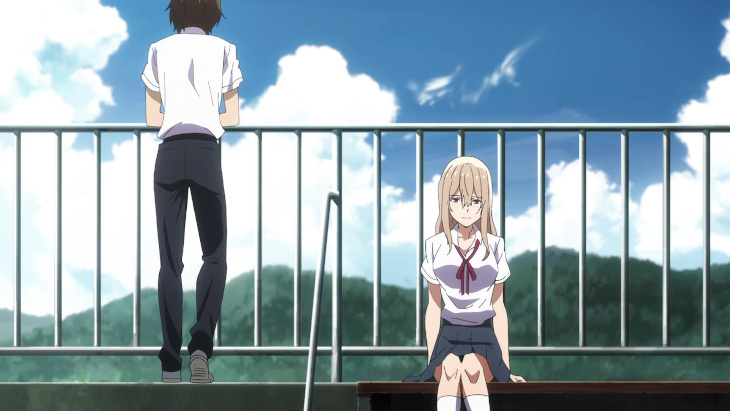
Clair is initially something of a wildcard, as her desire to find her sister has seemingly driven her to the edge of sanity. There is underlying reasoning though, and, as the show continues, she is shown to be much more pragmatic than her first appearances may lead one to believe. Shuichi is the inverse, with gradual cracks appearing in his world, suggesting that his mild and submissive personae might be a deliberately constructed fabrication that someone else set up. As a pair they complement each other well, thus making the core idea of the series an effective one. To fight, Clair literally climbs inside Shuichi, allowing them to compensate for the other’s weaknesses. Aspects of the original intention behind Shuichi’s power remain elusive though, and this leads to one of the problems that the series has. It isn’t finished. The finale hints at a few answers, but offers little that is concrete, and in the end the viewers are left with even more questions. Given that the manga is still ongoing, this is probably the best viewers could hope for, but, if a second season isn’t released, it will serve as a slightly disappointing note to end the anime on.
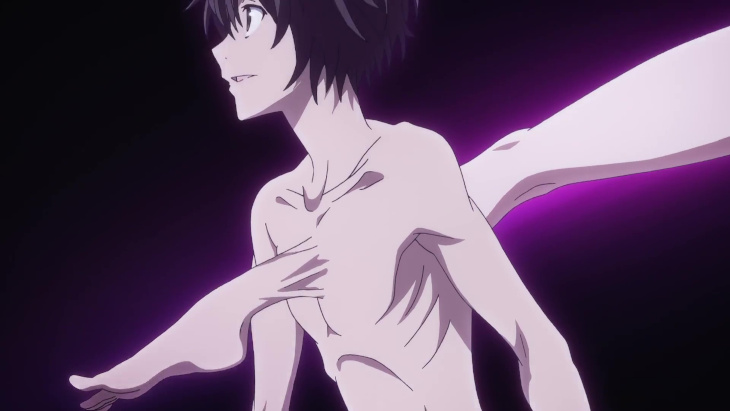
The production studio behind Gleipnir is Pine Jam, and if you’re thinking to yourself, “I’ve never heard of that studio,” you’re not the only one. Evidently, they were behind the anime Gamers! back in 2017, which I’ve at least heard of. This marks only the fifth anime series they’ve helmed, and it’s an impressive accomplishment. The animation is crisp. The fights are kinetic. No one goes off model. I didn’t notice significant animation shortcuts. Frankly, if someone told me that a studio like MAPPA had produced this, I’d find that believable. They do a good job of bringing to life the intentionally uncomfortable moments as well. Watching Clair climb into Shuichi is meant to evoke a sense of uneasy intimacy, and the animation for those moments captures those elements perfectly. Pine Jam might be a studio worth taking note of going forward.
Before I wrap up, a few Notes and Nitpicks:
- One of the issues I have with the ending is that it ends on a note which serves to redefine the relationships and histories of several characters, thus revealing that a number of assumptions that had been established were wrong, but it doesn’t offer any clarity to what the truth is.
- If I were to trade in a coin, I think I’d go for perfect hand-eye coordination. This would make drawing easier… That’s a boring option, but it was the first that came to mind.
- Another factor which led me to draw comparisons to Mirai Nikki was Gleipnir’s OP. They have a similar tone and aesthetic, though I think I prefer Gleipnir’s by a sizable margin.
- Fun fact: About half a year ago I started using my MAL account again, and I saw that the last time I had used it I had updated viewing information on Mirai Nikki. This actually tells me the timeframe when I had last used the account because the show was still pretty new at the time.

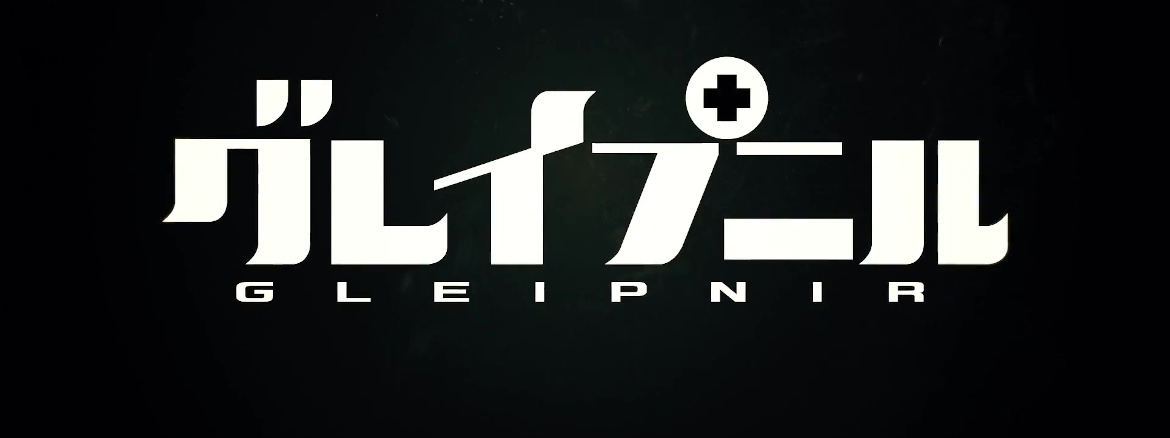
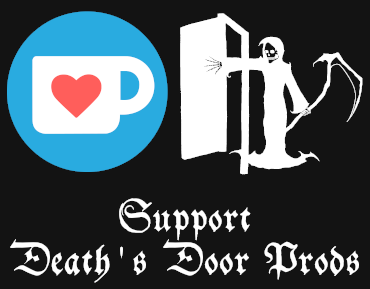


Add comment